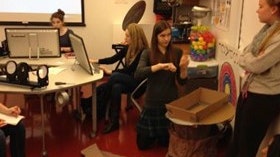Homepage
•
Learning Library
•
Blog
•
Engage girls in STEM by starting early
Expand breadcrumbs
Expand breadcrumbs
- Learning Library
- Blog
- Engage girls in STEM by starting early
- Homepage
- •
- Learning Library
- •
- Blog
- •
- Engage girls in STEM by starting early
Engage girls in STEM by starting early
By Lisa Abel-Palmieri
June 30, 2014








